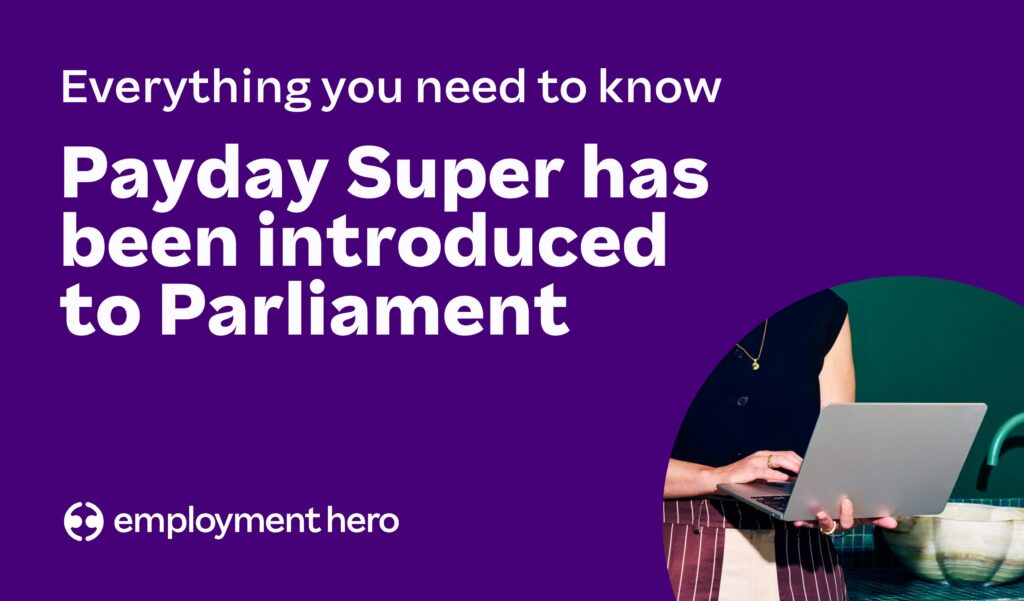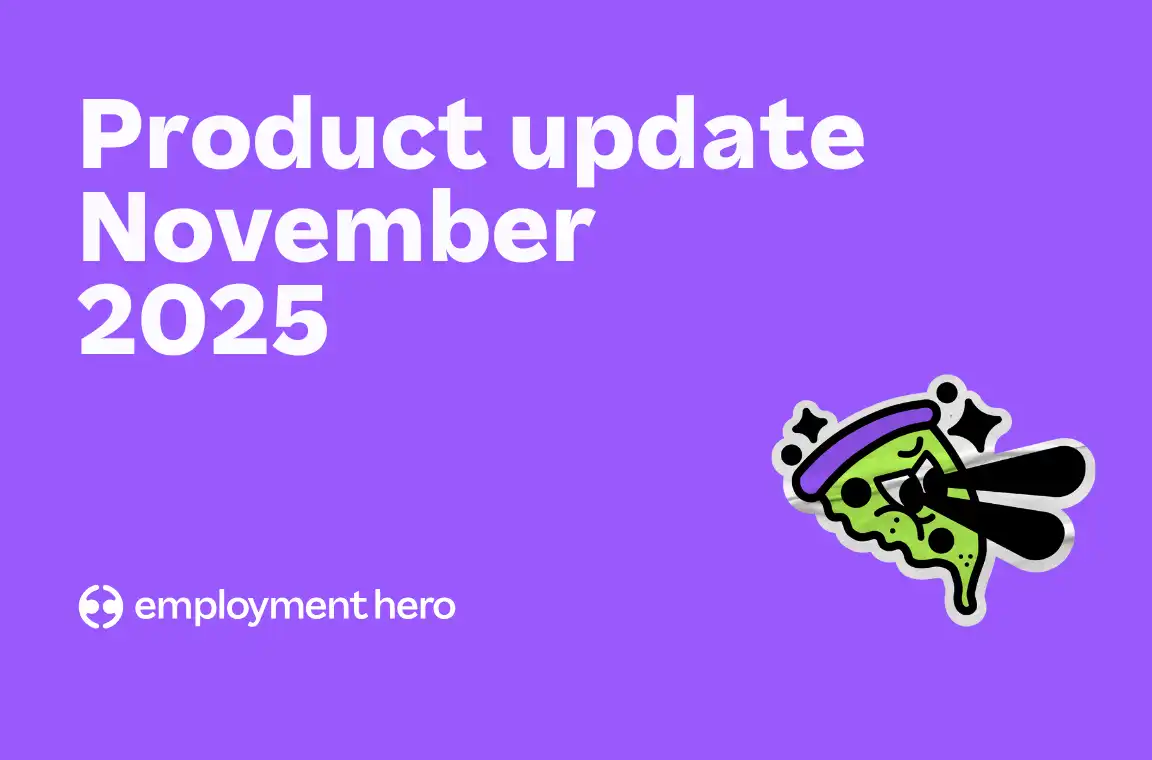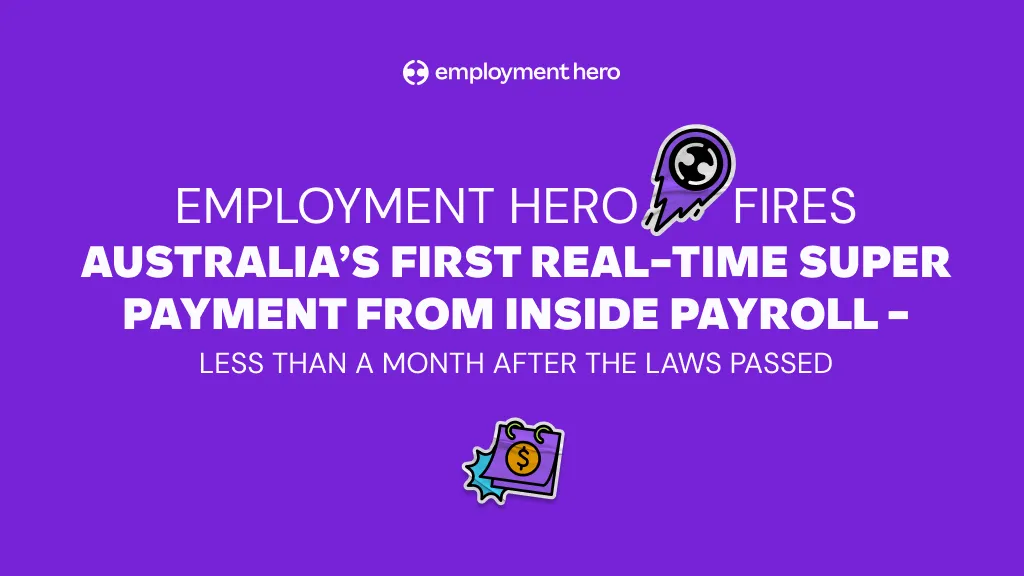Payday Super has been introduced to Parliament: here’s what it means for businesses

Contents
The long-anticipated wait is over. The Treasury Laws Amendment (Payday Superannuation) Bill 2025 has landed and it’s set to change the way every employer manages paying super contributions with Payday Super.
While Treasury released the Exposure Draft, or the proposed version of the amendment, earlier this year for public consultation, on Thursday 9 October 2025, the Bill was introduced to Parliament. This means that the process for this to become law has started.
The Bill includes a few notable changes from the Exposure Draft, including changes to timeframes for when super contributions need to land in your employees’ super funds. In addition to this, the Australian Tax Office (ATO) has proposed a draft Practical Compliance Guideline.
We’re breaking down what these two documents mean for businesses and how to start preparing your payroll processes to manage these changes come 1 July 2026.
Disclaimer: The information in this article is current as at 15 October 2025, and has been prepared by Employment Hero Pty Ltd (ABN 11 160 047 709) and its related bodies corporate (Employment Hero). The views expressed in this article are general information only, are provided in good faith to assist employers and their employees, and should not be relied on as professional advice. The Information is based on data supplied by third parties. While such data is believed to be accurate, it has not been independently verified and no warranties are given that it is complete, accurate, up to date or fit for the purpose for which it is required. Employment Hero does not accept responsibility for any inaccuracy in such data and is not liable for any loss or damages arising either directly or indirectly as a result of reliance on, use of or inability to use any information provided in this article. You should undertake your own research and to seek professional advice before making any decisions or relying on the information in this article.
Super payments must reach your employees’ super funds within seven business days
Previously, it was said that super contributions must reach your employees’ super fund within seven calendar days of payday. Employment Hero advocated on behalf of SMBs for a longer period to pay with the government and we are pleased to see this has now been updated to seven business days. This means you have more time before super payments are required to hit your employees’ super funds.
This update is a positive step that shows Treasury and the ATO are listening to industry feedback and making meaningful updates to support SMBs through the new process. We’ll continue to advocate for further improvements that make Payday Super payroll and compliance easier for employers.
The draft Practical Compliance Guideline
Another important update is the release of the draft Practical Compliance Guideline (PCG). The ATO has introduced this to acknowledge that the new Payday Super requirements are a big change for businesses.
Once the Payday Superannuation Bill becomes law, this guideline will apply to how the ATO will assign its compliance resources to investigate any unpaid or missing super. The PCG will only apply for the first year that Payday Super is in effect (1 July 2026 – 30 June 2027).
During this time, the ATO will focus its attention on employers who pose the biggest compliance risks by categorising them into low, medium and high ‘risk zones’. For an employer to avoid penalties in the first year, they must fall in the low risk category, showing that they’ve taken steps to address any issues or SG shortfalls in a timely manner.
This means that if an employer has made a genuine effort to pay super on time and in full under the new Payday Super rules, but the payment is delayed due to external reasons (e.g. a super fund rejects the contribution), the ATO will take into consideration how quickly the employer resolves the issue.
We’ve included the ATO Draft Practical Compliance Guideline below.
| Risk zone | Requirements |
|---|---|
| Low (The ATO states they will not have cause to review the employer’s actions.) | An employer will fall in the low-risk zone where all of the following have been met:
|
| Medium (The ATO states that compliance resources may be applied to investigate whether the employer has an SG shortfall for one or more QE days. Medium-risk arrangements will be given lower priority than arrangements that are rated high risk.) | An employer will be in the medium-risk zone when they do not meet the criteria to be in the low-risk zone, but the individual final SG shortfalls for all their employees are nil by 28 days after the end of the quarter in which the qualifying earnings were paid. |
| High (Compliance resources will be applied to investigate whether the employer has an SG shortfall for one or more QE days. High-risk arrangements will be given the highest priority resourcing) | An employer will be in the high-risk zone where the employer does not meet the requirements to be in the low-risk or medium-risk zone. An employer will be in the high-risk zone if they have one or more individual final SG shortfalls greater than nil for their employees by 28 days after the end of the quarter in which the qualifying earnings were paid. |
Source: ATO
Manage your Payday Super risk with Employment Hero
Under the ATO’s Practical Compliance Guideline, businesses must show they’re doing the right thing every payday, even if external factors mean contributions don’t clear immediately. That’s why Employment Hero is developing HeroClear, a superannuation tool designed to help employers manage their Payday Super obligations. This tool is currently in development now and will launch before July 2026.
With HeroClear, super compliance will be seamless and stress-free. Super details will be automatically validated upfront, contributions will be calculated and submitted directly from Employment Hero Payroll, and payments will be securely drawn from your nominated business account. Every transaction, from payment through to settlement, errors or refunds, will be tracked seamlessly within your Employment Hero platform.
Unlike standalone clearing houses or payment tools, HeroClear will be the only end-to-end solution built directly into your payroll system. That means:
- No file uploads or manual reconciliation, everything is automated.
- Errors are caught before submission, reducing bounce-backs and missed deadlines.
- Payments and reporting happen together, ensuring contributions reach the fund within the ATO’s seven-day rule.
- Full visibility and proof of compliance, detailed histories, confirmations, and reports make it easy to show you’ve met your obligations and avoid penalties.
Beyond automation, HeroClear will give you peace of mind, simplifying compliance so you don’t have to worry about missed payments.
The shift to Payday Super is coming fast, but HeroClear will keep payroll, super and compliance all under control. By integrating everything into one seamless flow, businesses won’t need to juggle multiple systems or rely on separate clearing houses or banking tools.
Sign up to our Payday Super mailing list to stay updated on HeroClear and get notified when it goes live or get in touch with one of our business specialists to learn how Employment Hero can support your business to prepare for Payday Super.
In the meantime, check out our library of Payday Super resources below:
Related Resources
-
 Read more: PEO vs. EOR: A guide to global hiring
Read more: PEO vs. EOR: A guide to global hiringPEO vs. EOR: A guide to global hiring
Learn the key differences between a PEO and an EOR. Discover why an EOR is the smarter, safer way to…
-
 Read more: Product Update: November 2025
Read more: Product Update: November 2025Product Update: November 2025
Welcome to the November 2025 product update from the Employment Hero team. We’ve got lots to share around Workflows, Rostering,…
-
 Read more: Payday Super pressure eased: Employment Hero fires Australia’s first real-time super payment from inside payroll – less than a month after the laws passed
Read more: Payday Super pressure eased: Employment Hero fires Australia’s first real-time super payment from inside payroll – less than a month after the laws passedPayday Super pressure eased: Employment Hero fires Australia’s first real-time super payment from inside payroll – less than a month after the laws passed
One month on, Employment Hero, Zepto and OZEDI deliver the first payroll-embedded super-clearing payment over the New Payments Platform (NPP),…























